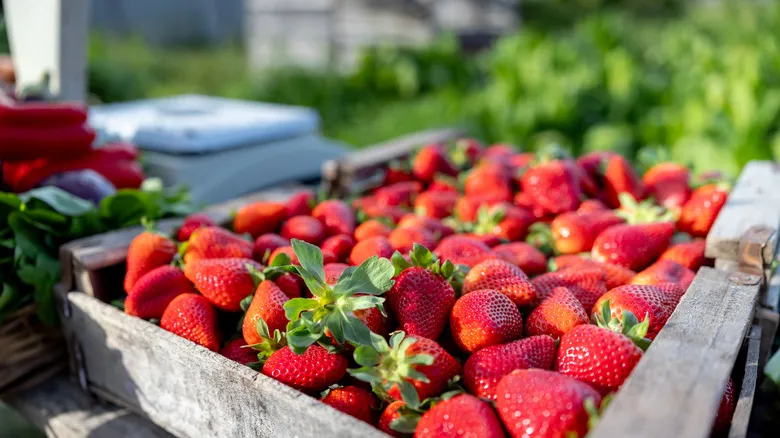Pick out spoiled berries
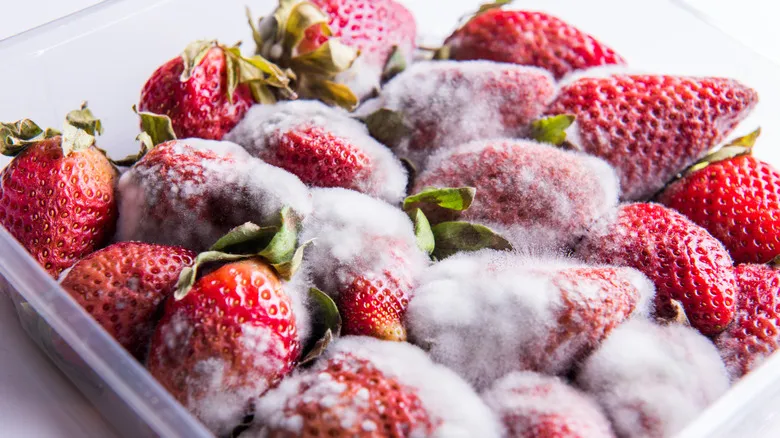
To start, it's essential to discard any spoiled berries as soon as you get them home. While it may seem like an extra chore to sort through your berries and remove any that appear mushy, brown, or fuzzy, this simple step is one of the most effective ways to keep your strawberries fresh for as long as possible. Although it can be a bit of a nuisance, this practice is crucial for safeguarding the rest of your berries.
If you skip this step, the mold (and possibly bacteria) that caused the spoilage can spread from one berry to another, potentially ruining the entire batch. Mold is particularly insidious, as it can thrive on nearly any surface that has moisture and organic material, which certainly applies to strawberries. It spreads through tiny spores that are invisible to the naked eye and can quickly transfer from one berry to another. Therefore, never assume you can deal with the bad ones later and that everything will be fine. The same goes for bacteria.
When handling moldy strawberries, be sure to wash your hands after touching any spoiled ones. One of the quickest ways to spread contamination is by using the same utensil (in this case, your fingers) without cleaning them first. By avoiding this, you can help ensure that your other berries stay fresh longer.
Never wash mold off
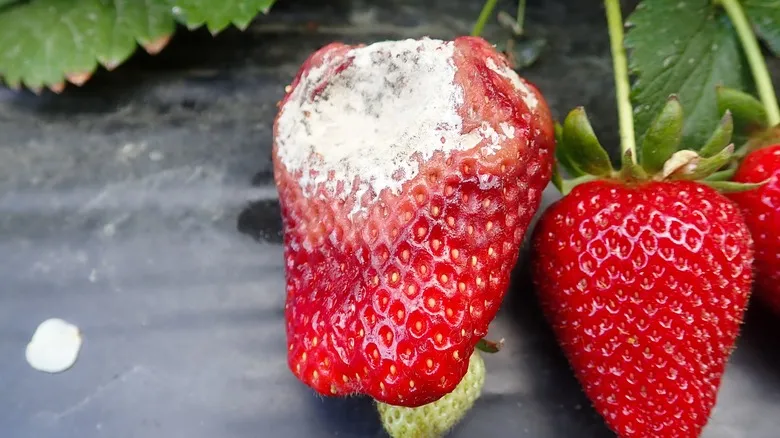
Washing mold off fruit is generally ineffective, as mold can penetrate beneath the skin. Additionally, water can accelerate spoilage. Simply washing the fruit may not eliminate the issue and could potentially facilitate the spread of mold or bacteria to other berries.
A better approach is to cut away the moldy sections if the fruit is still firm. Be sure to cut at least an inch around the moldy area to ensure complete removal. However, this method may not be practical for average-sized strawberries. It's a useful technique for other types of fruit, though, and in those cases, cutting is preferable to washing, as washing could spread the mold further.
If you encounter a large strawberry with mold, reconsider cutting it if the berry is soft. In such instances, it’s best to discard the fruit entirely. Don’t worry about firm strawberries that were stored next to moldy ones; if they appear fine, they likely are, and you can keep them without concern.
Store berries in the fridge

If you don't plan to serve berries today or tomorrow, it's best to store them in the fridge. If you choose to keep them on the counter, ensure they have good airflow by using a mesh basket or another loose storage option. Storing fruit at room temperature can be ideal for those intended for a platter or to be enjoyed on their own, as refrigeration can alter the flavor of berries by diminishing the sweet aroma that our taste buds rely on to recognize that classic strawberry flavor. In short, refrigerated berries tend to be less delicious. Always keep the stems attached when storing berries on the counter.
If you're not consuming them right away, place the berries in the fridge, where they can last between 3 to 7 days, depending on their freshness at purchase and whether you've removed any moldy ones. Just be sure to check on them periodically, or you risk losing the entire batch.
Don't wash until you're going to use

Keep in mind that washing berries can accelerate spoilage by promoting the growth of mold and bacteria. It also introduces moisture, making them mushy and diminishing their overall freshness. As a general guideline, whether you're keeping berries on the countertop or in the refrigerator, it's best to refrain from washing them until just before serving. If you're only using a few at a time, wash only the amount you plan to eat immediately. (There are some exceptions to this guideline, which we will cover in "Try the vinegar method.")
When you do decide to wash berries, make sure to rinse them thoroughly until any dirt or debris from the field, such as straw, is removed. Avoid using soap, as the berries might absorb it, altering their flavor, which is not ideal for enjoyment. Additionally, while it's unlikely that ingesting soap in small amounts would cause harm, it's important to note that it can make you quite ill.
Never store strawberries wet
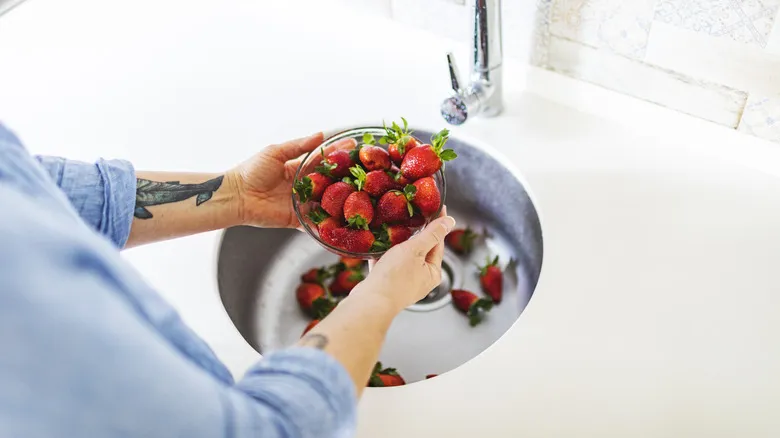
At times, you may feel the need to wash berries. This is especially true when you're preparing for a party the next day or need to quickly grab a snack for the carpool right after getting home from work the next day. If you need to wash berries in advance (specific tips to follow), go ahead and do so—but remember, just like a horse, never store them while they're still wet.
The good news is that if you dry your berries properly, they will retain the same weight as before washing, indicating they haven't absorbed any extra moisture. The best method is to wash and then spin strawberries in a salad spinner lined with paper towels. Simply place paper towels or, for a more eco-friendly option, rags in the spinner, then add the berries in a single layer. Spin them just like you would with lettuce, and voilà—your strawberries will be spoilage-proof and ready for later use.
Provide airflow
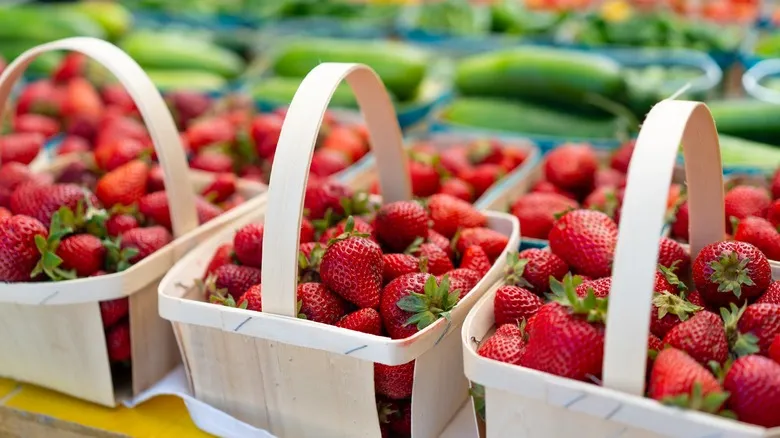
Air circulation plays a crucial role in preserving the freshness of strawberries. As mentioned, bacteria and mold thrive in moist environments, so proper airflow helps reduce the conditions that allow them to flourish. This principle is similar to the advice given by expert gardeners, who recommend pruning shrubs and trees to allow light to filter through the branches; increased airflow makes it more difficult for moisture to accumulate and for pathogens to establish themselves.
Therefore, it's best to avoid storing strawberries in airtight containers. Instead, keep them in the loosely woven plastic baskets or the perforated clamshell containers they originally came in. If you purchased them from a farmer's market, feel free to return them to their paper quart containers after inspecting them for mold.
Opinions on airflow vary, however. Some believe that a tight seal is beneficial for prolonging the life of strawberries, as it limits airflow and, since mold requires oxygen to grow, this can help prevent its spread. You may need to experiment to find what works best for you. If you prefer a sealed option, consider using a salad spinner to keep them suspended. Others recommend using canning jars lined with paper towels.
Try the paper towel method
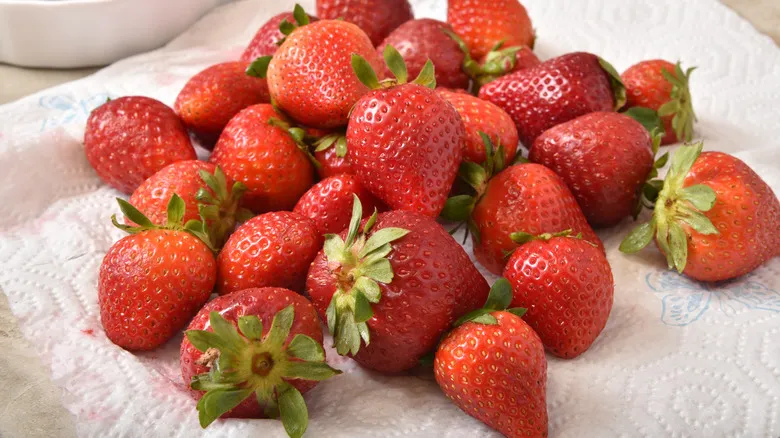
Strawberries are undeniably popular, cultivated in various countries around the globe, and have become key ingredients in some of the most cherished dishes and desserts worldwide. Consider strawberry Charlotte, Neapolitan ice cream, and even soda. First documented in writing around 200 B.C.E., this humble berry has only increased in popularity since that time. What could possibly be less universal than our affection for strawberries? If you guessed "the paper towel method," you’re spot on.
This technique is incredibly effective. Using paper towels not only absorbs any moisture that may have accumulated on the strawberries (perhaps from a grocery store misting), but it also helps to draw out excess moisture that can build up in the fridge. By lining containers with paper towels, you can extend the shelf life of your berries. After sorting and preparing your strawberries, place paper towels in the cartons they came in to help control moisture levels. This method can be applied on the countertop or in the refrigerator. While you can also use rags for drying strawberries, they need to be thin enough to fit inside the containers.
Try the vinegar method
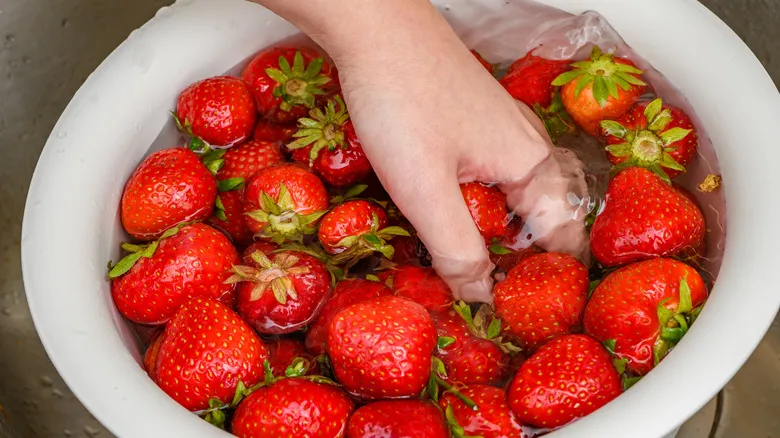
If the combination of strawberries and vinegar doesn’t seem appealing, you’re not the only one. It brings to mind the infamous dinner party scene in "Little Women," where Jo mistakenly serves berries and cream made with spoiled dairy and salt instead of sugar. However, rest assured, this method is far more effective than allowing an inexperienced teenager to take over the kitchen.
Here’s the reality: by the time berries reach your hands, they can be quite aged. With proper cold storage, berries can remain fresh for weeks or even months before arriving at the grocery store. While they may not be spoiled, they often lack the freshness you desire. They have had ample time to develop mold and bacteria, much of which may not be visible to the naked eye. Consequently, when these berries come out of cold storage and are exposed to moisture and air, any existing bacteria or mold spores can begin to multiply.
It’s said that washing strawberries in a vinegar and water solution can help reduce spoilage, as the acetic acid in vinegar possesses antimicrobial properties. This is why some bloggers advocate for this technique. To try it yourself, mix water and white vinegar in a 3:1 ratio, then let the strawberries soak for a few minutes. Afterward, remove the berries and dry them as you typically would after washing, before placing them back in a storage container that allows for good airflow.
Try the hot water method
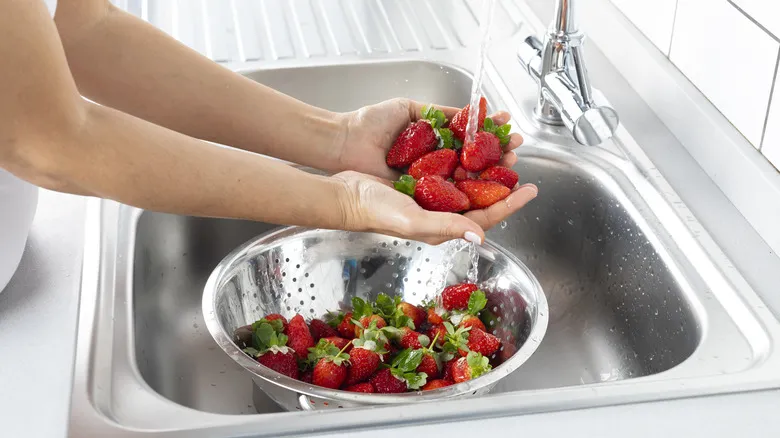
Not a fan of vinegar, or just don’t have any on hand but want to wash your produce in advance? No problem! You can use hot water, which is known for its cleaning abilities. While tap water isn’t hot enough to eliminate bacteria, it can effectively remove oils that harbor them, making handwashing a reliable way to prevent the spread of illness. Interestingly, you can also use this hot water method on delicate berries, which are best kept at room temperature or chilled.
However, it’s worth noting that berries aren’t as delicate as they seem. They endure high temperatures while growing in the hottest months of the year. A brief exposure to heat can help clean them without causing significant harm. The idea is that hot water at 125 degrees Fahrenheit is more effective at inhibiting mold growth than cold water, yet it’s not hot enough to damage the berries. For optimal results, immerse them or hold them under running water for 30 seconds, which should help them last about a week before molding, according to enthusiasts.
That said, this method has received mixed reviews online. Some sources indicate that hot water doesn’t significantly reduce spoilage, with 60% of berries becoming unusable after a week. Feel free to give this technique a try, or simply skip washing in advance.
Beware of berries at the bottom
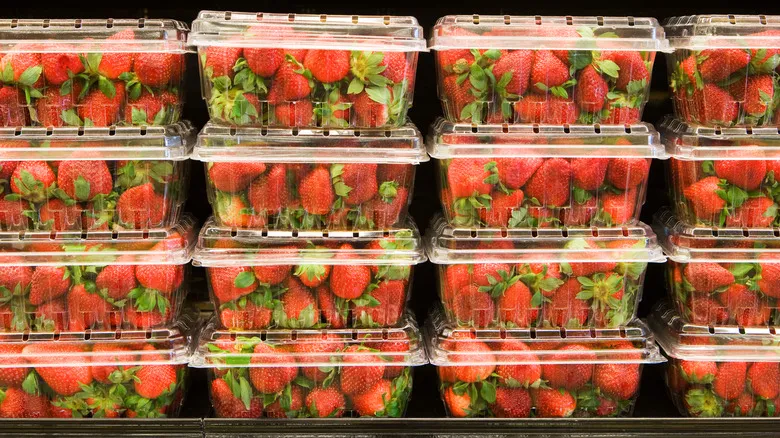
One of the most significant warning signs when purchasing produce is finding squished berries. However, many of us often overlook the condition of the strawberries at the bottom of the basket. While it can be challenging to see through the holes of a paper or opaque container, it's worthwhile to take a moment to check for any mushy fruit. If the berries are in a clear plastic container, always lift it up to inspect the bottom.
Even if the berries appear fine at the store, those at the bottom of a quart-sized container (especially with heavier fruits) are prone to getting squished after a week or two. A crucial step is to give those bottom berries some relief. After sorting through them, you can help extend their freshness by laying them out as flat as possible.
Ideally, you should store your strawberries in a single layer in the refrigerator. Some suggest using a sheet pan lined with paper towels (thin rags can work as well). Keep in mind that sheet pans can take up a lot of space, so it ultimately depends on how much room you have available. For those with multiple refrigerators, this becomes an easy decision.
Try storing berries upside down
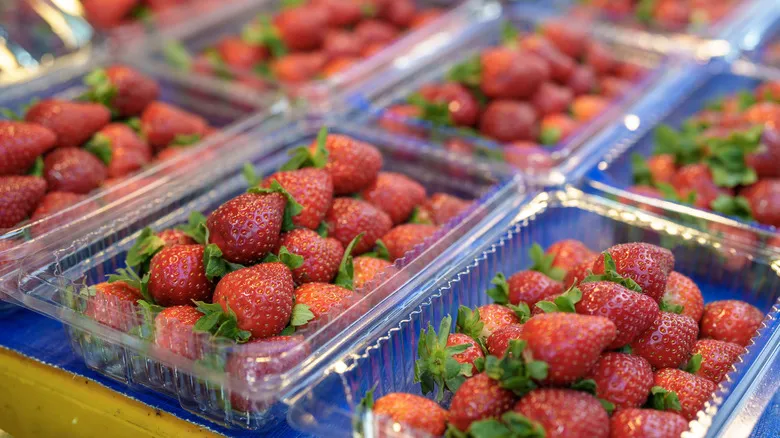
TikTok to the rescue! A TikTok hack suggests that when you bring your berry containers home from the store, you should open the lid, place a paper towel inside, close it, and then turn it upside down. Storing it this way in the fridge can help prevent spoilage while giving the berries on the bottom a break from the weight of those on top.
This method offers a fresh twist on the classic paper towel technique. The brilliance of this idea lies in the fact that by the time your berries reach you, they’ve been packed in that carton for a while. Consequently, the berries at the bottom have been under pressure from those above and could really use some relief. Fortunately, you don’t have to go through the hassle of laying them out in a single layer on a sheet pan if you prefer not to. To provide that much-needed relief, simply open the carton, place a paper towel on top, close it, and flip it over. Then, store it in the fridge upside down to keep those bottom berries fresh.
Ideally, you should sort through your berries (and avoid getting them wet), as we’ve mentioned before. However, if you’re short on time, you can just pop the towel in, flip the container, and put it in the fridge until you can sort them out. Just be sure to check on your berries within a day or two, as spoilage can spread quickly from one to another, no matter how much flipping you do.
Store in a jar and use the salt method when hulling berries
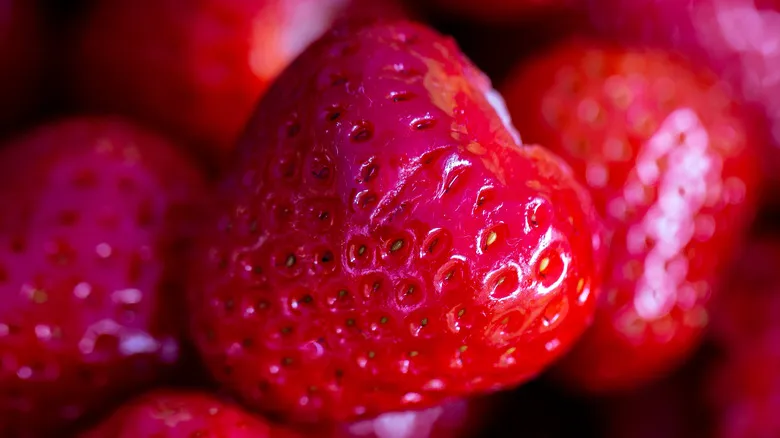
To keep strawberries fresh for as long as possible, it's best to avoid hulling them. Removing the green cap exposes the fruit to air and moisture, which can accelerate spoilage. If hulling isn't necessary, it's best to skip it. However, if you do need to hull the strawberries for a specific reason, here's how to prepare them properly.
Start by washing your strawberries. You can use either the hot water or vinegar method, or opt for a kosher salt bath by adding 2 tablespoons of salt to a large bowl of water. Soak the strawberries for 5 minutes before hulling and drying them thoroughly. After that, store them in an airtight container. If they were fresh to begin with, this method can help keep them fresh for up to a week.
Keep in mind that strawberry purée spoils more quickly than whole strawberries. If you're making it for a dessert or to preserve berries that are starting to go bad, be sure to use the purée within 3-5 days, as it won't last as long as whole strawberries. On the bright side, purée freezes well, so you can store it in the freezer for up to three months.
Match your storage time to your prep method

The longevity of berries is influenced by factors outside your control, such as their harvest time and how long they've been in the grocery store. However, one aspect you can manage is how you store them. Always align the storage duration with the preparation method, whether you're dealing with puréed, hulled, whole berries, or frozen fruit.
Whole fruit that hasn't been sorted can spoil at any moment. Once sorted, you can anticipate a shelf life of 1-2 days on the countertop and up to a week in the refrigerator. It's said that using vinegar, hot water, and salt treatments can extend the life of berries in the fridge to a week or even longer, but you'll need to test this for yourself. Untreated and unwashed berries can also last that long in the fridge, as they are surprisingly durable when you remove any moldy ones.
If you plan to prepare the berries further, you may either shorten or prolong their shelf life. Hulling may or may not decrease storage time (about a week, depending on freshness), while puréeing will definitely reduce it (3-5 days). Frozen berries can last up to three months, whether sliced or whole, but keep in mind that they become mushy upon thawing. Therefore, you shouldn't expect to serve them in their defrosted form. However, frozen berries work wonderfully in smoothies (while still frozen) or when cooked into pies and jams (after thawing). The key takeaway is to consider how you intend to use the berries before preparing them.
Recommended
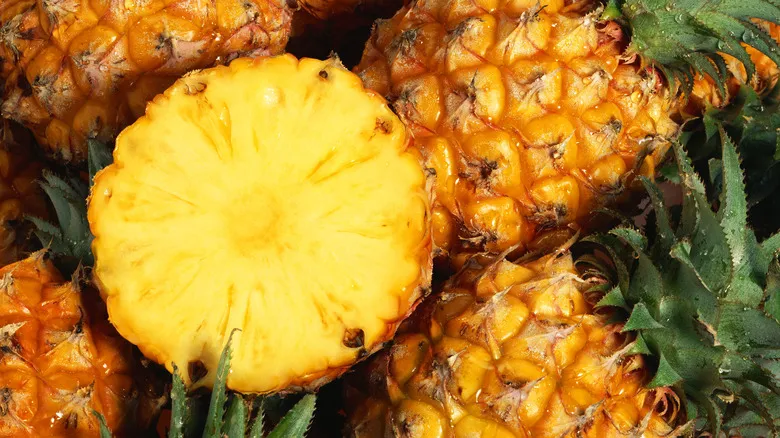
The Best Type Of Cheese To Pair With Pineapple

How Ketchup Can Help Clean Burnt Sugars From A Pan

Mistakes Everyone Makes With Pasta Salad

What To Do If You Accidentally Eat Mold
Next up

